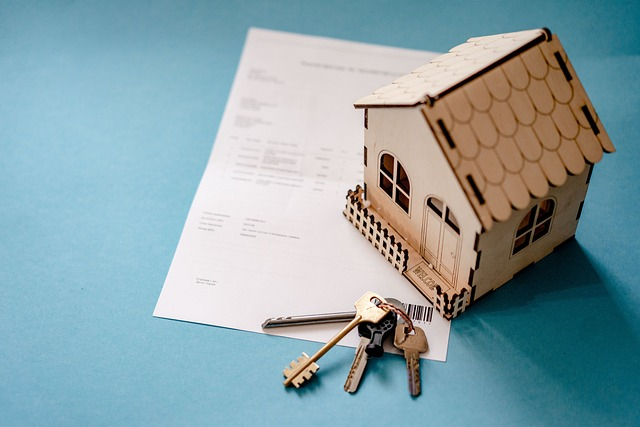What is a Commercial Equity Line of Credit?
A commercial equity line of credit (CELOC) is a financial tool that allows businesses to borrow money against the equity in their commercial property. This type of credit works similarly to a home equity line of credit (HELOC) but is specifically designed for commercial properties.
With a CELOC, businesses can access funds up to a predetermined credit limit as needed. The business only pays interest on the money it draws from the revolving line of credit.
This flexibility makes it an attractive option for businesses looking to fund projects, manage cash flow, or invest without taking out a traditional loan. Additionally, the interest paid on a CELOC may be tax-deductible, making it a cost-effective financing solution for many small businesses.
CELOC Uses
Businesses use a commercial real estate equity line of credit funds for various purposes. Examples include:
- Renovations or improvements to commercial property.
- Purchasing new equipment or machinery.
- Working capital for business operations.
- Financing expansion or growth opportunities.
- Consolidating high-interest debt (less common).
How do Commercial Equity Lines of Credit work?
A CELOC provides a revolving credit line based on the commercial property’s equity. The business only pays interest on what it borrows, and the credit line replenishes as it’s repaid. Let’s examine the components of a CELOC.
Commercial Real Estate Loans: Commercial real estate loans are often necessary for obtaining a commercial equity line of credit because they provide the initial financing needed to secure the property that will serve as collateral for the line of credit. Lenders typically require a certain amount of equity in the property before extending a line of credit, which is where the commercial real estate loan comes into play. This loan allows businesses to leverage the value of their property to access funds for various business needs.
Equity & Credit Evaluation: Lenders evaluate the equity in a commercial property by assessing the property’s current market value and subtracting any outstanding mortgage balance. They also consider the business owner’s credit score to determine their creditworthiness and ability to repay the line of credit. A higher equity value and a strong credit score can increase the likelihood of approval for a CELOC.
Credit Limit: Lenders typically use the loan-to-value (LTV) ratio to determine the credit limit for a commercial equity line of credit. This ratio is calculated by dividing the total loan amount by the property’s appraised value. The credit limit is usually set at a percentage of the property’s appraised value, with most lenders offering limits between 70% and 80% of the property’s value.
Collateral: Commercial equity lines of credit work by using commercial property as collateral, making them secured lines of credit. This means that if the borrower defaults on the loan, the lender has the right to seize the property to recoup its losses.
Interest Rate: Interest rates on a CELOC can vary depending on the lender and the borrower’s creditworthiness. The rate can be variable or fixed, and lenders typically base it on a benchmark rate, such as the prime rate, plus the lender’s margin. Using the property as collateral secures the credit line, which typically provides a lower interest rate than an unsecured business line of credit.
Terms: CELOCs typically have terms ranging from 5 to 10 years, although some go up to 20 years. The lender bases the term on factors such as the borrower’s creditworthiness, the amount of equity in the property, and the lender’s policies. Lenders may also consider the purpose of the loan and the borrower’s financial stability when determining the term of a CELOC.
Flexible Payments: Commercial equity lines of credit offer flexible payments. Borrowers can make interest-only payments during the draw period and repay the principal during the repayment period. This flexibility can help businesses manage their cash flow more effectively.
CELOC Example
ABC Company, a successful software development firm, decided to leverage the equity in its office building to secure a Commercial Equity Line of Credit (CELOC). The company had been steadily growing and needed additional funds to invest in new technology and expand its operations.
By using the equity in their office building as collateral, ABC Company was able to secure a significant line of credit with favorable terms. This allowed them to access funds quickly and easily whenever needed, providing the flexibility and financial stability necessary to continue their growth trajectory. With the CELOC in place, ABC Company could confidently pursue new opportunities and take their business to the next level.
What types of Commercial Property are available for a CELOC?
Businesses can use various commercial properties to secure a commercial equity line of credit. Here are a few examples:
- Office buildings.
- Retail spaces.
- Warehouses.
- Industrial properties.
- Mixed-use buildings.
- Multi-family residential properties.
Property Improvements
Property improvements play a crucial role in CELOC eligibility. Lenders often assess the impact of enhancements on property value. Upgrades like renovations or expansions can increase the chances of securing a higher credit limit.
What are the advantages of a Commercial Equity Line of Credit?
A commercial property equity line provides businesses with quick access to cash by leveraging the equity in their property. This allows flexibility in managing financial needs such as property improvements or unexpected expenses.
Unlike traditional loans, a CELOC is a revolving line of credit that allows borrowers to borrow up to a specific credit limit. They can repay and borrow again as needed, providing ongoing access to funds.
It offers competitive interest rates and terms compared to other forms of financing. This makes it attractive for businesses looking to leverage their property’s equity.
What are the disadvantages of a Commercial Equity Line of Credit?
Like all financing products, a commercial line of credit comes at a cost. You’ll have to pay interest on any borrowed funds. Lenders typically charge an appraisal fee to determine the property’s value. Depending on the lender and CELOC agreement, there may also be a loan origination fee or even a prepayment penalty.
Using commercial property as collateral means the business risks losing the asset in the case of foreclosure. The lender’s security interest in the property also prevents the business from using it as collateral in other financing arrangements.
CELOC interest rates are typically variable, which can make budgeting and managing monthly payments more challenging. While CELOC rates are lower than business credit cards or unsecured financing, they typically have higher interest rates than traditional business loans.
Late payments can result in additional fees and damage to the business owner’s credit score. It’s vital to ensure your business can effectively manage payments and maintain cash flow when using a commercial equity line of credit.
CELOC Pros & Cons
Pros:
- Access funds by leveraging equity in your property.
- Lower interest rates than unsecured lines of credit, like a business credit card.
- Only pay interest on the funds you use from your credit line.
- Revolving credit and flexible repayment structures.
Cons:
- Risk of losing the commercial property in foreclosure.
- Potential for additional fees and costs to open the credit line.
- Typically has variable interest rates, making budgeting more challenging.
- Higher interest rates than traditional business loans.
How do I apply for a Commercial Equity Line of Credit?
Here is a step-by-step guide on how to apply for a CELOC:
- Research and choose a lender: Start by researching different financial institutions and lenders that offer commercial equity lines of credit. Compare their terms, interest rates, and eligibility requirements to find the best fit for your business.
- Gather necessary documents: Prepare all the documentation required by the lender to evaluate your application. This may include financial statements, tax returns, business plans, commercial mortgage agreements, and other relevant information about your business.
- Fill out the application: Complete the lender’s application form. Provide thorough and accurate information about your business, financial history, and the purpose of the line of credit.
- Submit your application: Once you have completed the application form and gathered all the necessary documents, submit your application to the lender for review.
- Await approval: The lender will review your application, financial documents, and credit history to determine if you qualify for a commercial equity line of credit. This process may take some time, so be patient.
- Negotiate terms: If your application is approved, the lender will offer you a line of credit with specific terms and conditions. Review these carefully and negotiate any aspects that you feel need adjustment.
- Sign the agreement: Once you are satisfied with the terms, sign the agreement with the lender to formalize the commercial line of credit.
- Access your funds: After signing the agreement, you can access funds from your commercial equity line of credit as needed for your business operations.
Frequently Asked Questions
Here are the most common questions about commercial equity lines of credit.
What are the interest rates for a Commercial Equity Line of Credit?
Commercial equity lines of credit typically have interest rates ranging from around Prime + 4% to 8%, depending on the lender, the borrower’s creditworthiness, and the current market conditions. However, rates can go significantly higher for borrowers with poor credit. Some lenders offer interest rates as high as 60%.
These rates are often variable, meaning interest rates can fluctuate over time based on factors such as the prime rate. Businesses considering a commercial equity line of credit should shop around and compare rates from different lenders to ensure they get the best deal possible.
What’s the difference between a Business Line of Credit vs a CELOC?
A CELOC is a specific type of business line of credit in which the property’s value determines the credit limit. The property itself is collateral, making it a secured line of credit.
A business line credit is often unsecured and based on the business’s cash flow. However, a business LOC may also be secured using other business assets, such as inventory or accounts receivable.
Is a Commercial Equity Loan the same as a Commercial Equity Line of Credit?
No, they are different. A commercial equity loan provides a lump sum upfront with fixed monthly payments, while a CELOC allows you to access funds as needed up to a set credit limit and repay based on what you use. However, they’re both forms of commercial equity financing.
Is a Commercial Equity Line of Credit the same as a HELOC?
A commercial equity line of credit (CELOC) is typically used by businesses to access funds for operational expenses or investments. In contrast, a home equity line of credit (HELOC) is designed for homeowners to borrow against the equity in their primary residence. Commercial equity lines of credit often have higher credit limits and interest rates than HELOCs, reflecting the different risk profiles of business and personal borrowing.
What are my alternatives to a Commercial Equity Line of Credit?
A CELCO is a specialized business financing product only available for business owners with a commercial real estate mortgage. There are many business funding alternatives if you don’t have a commercial mortgage or don’t want to use your equity as collateral.
Here are some of the top options to consider.
Business Term Loans: A business term loan provides a lump sum with a fixed repayment schedule over a specified term. This type of loan is typically used for significant investments, such as purchasing equipment or expanding operations, and can be secured or unsecured depending on the borrower’s creditworthiness.
SBA Loan: SBA loans are government-guaranteed loans designed to help small businesses access funding for various needs, such as working capital, equipment purchases, or real estate. These loans typically have favorable terms and lower interest rates than traditional commercial loans, making them an attractive option for small business owners looking for financing.
Equipment Financing: Equipment financing provides funding for businesses looking to acquire or upgrade machinery, vehicles, or technology. This type of financing allows businesses to spread out the equipment cost over time, making it more manageable for cash flow. Additionally, equipment financing may offer tax benefits and help preserve working capital for other business needs.
Invoice Factoring: Invoice factoring is a financial solution where a business sells its accounts receivable to a third party at a discount in exchange for immediate cash. This can help businesses improve cash flow and access funds quickly without taking on debt. Factoring companies typically advance around 80-90% of the invoice value upfront.
Merchant Cash Advance: Merchant cash advances are a type of funding where a business receives a lump sum of cash upfront in exchange for a percentage of future credit card sales. This alternative to a CELOC can be quick and easy to obtain, but it often comes with high fees and interest rates. Businesses should carefully consider the terms and potential impact on cash flow before pursuing a merchant cash advance.
Bad Credit Business Loans: Bad credit business loans are a financing option for business owners with less than stellar credit scores. These loans typically come with higher interest rates and stricter terms compared to traditional loans, but they can provide access to much-needed capital for those who may not qualify for other types of financing. It’s essential to carefully consider the terms and conditions of these loans before committing to ensure they are the right fit for your business needs.
What is a Commercial Equity Line of Credit – Final Thoughts
A commercial equity line of credit can be a valuable financial tool for businesses looking to access funds for various purposes. By leveraging the equity in their commercial property, companies can secure a flexible line of credit to support growth and manage cash flow effectively.
Compare different lenders and business loan options to determine if a CELOC suits your business goals. Consider repayment terms, fees, and interest rates to make an informed decision.
Contact us if you have more questions about CELOCs or to apply for a small business loan. Our alternative funding experts can help you find the best financing options for your business goals.



















